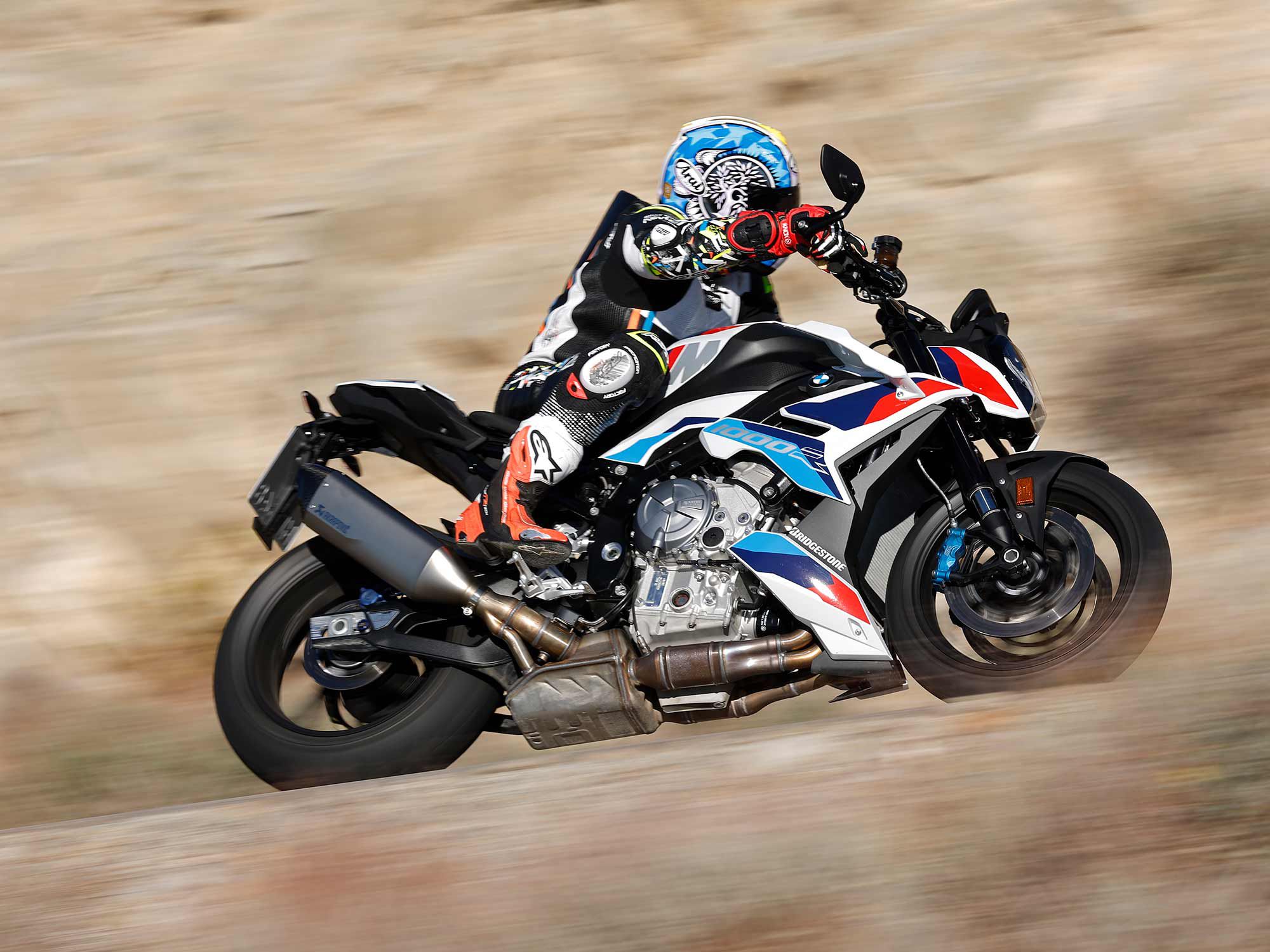
A few short years ago the concept of 200 hp naked bikes for the street seemed as pointless and unlikely as a perforated umbrella. But here we are in late 2022 and suddenly we find ourselves with a small but burgeoning club of fairing-free firebreathers capable of laying a double century of horses to the pavement.
Ducati’s Streetfighter V4 and MV’s Brutale 1000 RR are both in the 200 hp club, with Kawasaki’s supercharged Z H2 SE just a couple of horsepower short. Now BMW Motorrad has joined them with the astounding M 1000 R hyper-naked, a machine so capable, so rapid, and, with a claimed 205 hp on tap, so powerful it would surely have competed in World Superbikes not so long ago.
BMW already has its long-running, 165 hp S 1000 R naked, of course, which in performance terms sits in the subcategory of super-nakeds just below the firebreathers. To create its M, BMW has taken the new ShiftCam engine from the 2023 S 1000 RR superbike and inserted it into the S 1000 R’s naked chassis, meaning it makes the same power and torque, and even shares the same gearbox, as the track-focused RR.
Aerodynamic wings help to suppress wheelies by adding 24.3 pounds of downforce at 137 mph. New brakes, again taken directly from the S 1000 RR superbike, give improved braking. Chassis dimensions remain the same as the Single R but the electronic suspension (DDC Dynamic Damping Control) has been recalibrated to deal with the 40 hp increase in peak power.
Electronic rider aids also get a significant upgrade and recalibration to deal with the improved engine and braking power, and are linked to a six-axis IMU. New for the M 1000 R (and S 1000 RR) is the Brake Slide Assist system, which allows some drift on corner entry before the lean-sensitive ABS kicks in.
Transplanting the higher-revving ShiftCam engine from the latest S 1000 RR into the M 1000 R means the naked M has a peak of 205 hp at 13,750 rpm, up from 165 hp for the standard S 1000 R. Peak torque is 83.3 lb.-ft. at 11,000 rpm, which is a fraction down on the 84 lb.-ft. that the S 1000 R manages at a substantially lower 9,250 rpm, indicating the much racier nature of the new bike’s engine. There’s also an extra tooth on the rear sprocket to reduce the final drive ratio.
The standard 165 hp S 1000 R motor is flexible and as well suited to a commute into the city as it is on a day at the racetrack. I was worried that the M would lose that all-round usefulness, but it hasn’t. To make a 205 hp superbike engine user-friendly on the street is a big ask, but BMW has managed it.
Fueling is smooth, the power delivery is linear, and the quickshifter is light and perfectly matched with each up-or-down change. Even in sixth gear the motor pulls effortlessly below 30 mph. It’s easy to forget you’re sitting on top of an engine designed to win superbike races as it trickles without fuss through traffic or flows in a lazy gear too high through a local set of twisties.
The midrange is superb. Peak torque is a fraction down and higher in the rpm compared to the S 1000 R, but you’d be hard-pressed to tell. The M surges to 8,000 rpm and is thoroughly enjoyable to ride using the middle part of the rev range alone, short-shifting effortlessly via the slick and perfectly set-up quickshifter. In real terms, nothing has been lost in the move to the ShiftCam I4.
But—and let’s face it, you knew this was coming—from that strong but civilized midrange it revs wildly on to redline just short of 14,600 rpm. Switch the riding mode to Race or Race Pro and at 9,000 rpm the M 1000 R morphs into an entirely different beast. It revs so freely that it feels like the engine is frictionless. A wall of frantic air grabs feverishly at your leathers, you bend your torso into some kind of defensive tuck… And the speed just builds relentlessly.
Luckily, BMW allowed us a handful of laps of the Almeria racetrack in southern Spain to experience its full potential and, boy, does it deliver. Top speed is a quoted 174 mph, 16 mph higher than the standard S 1000 R. At the end of the long back straight it was still accelerating, still stable as rock under its aero winglets, and feeling like it would keep driving forever. Or until my head blew off.
BMW claims the winglets produce 24.3 pounds of downforce at 220 kph (137 mph), and they’re mounted on a substructure that transmits that force into the chassis—and on track you feel their presence, incredibly stable.
BMW’s electronic Dynamic Damping Control (DDC) is correlated to the bike’s riding modes—Road, Rain, Dynamic, Race, and Race Pro—to deliver a ride biased toward comfort at one end of the riding spectrum and stiffer track settings at the other.
Each mode can also be tuned to suit your riding mood and road but I was happy using the presets. On the road, you really notice a difference between the riding modes, which change the handling and character of the bike substantially. Road is obviously set for comfort; there’s more movement and weight transfer through the suspension working, while the ride quality is supple and anything but jarring.
Once into Dynamic mode you feel the difference immediately as the suspension stiffens, adding a degree of tautness to the handling that’s ideal for brisk, sporting days in the hills. For the track, Race and Race Pro are optimized for slicks or track-biased rubber rather than the Bridgestone RS11 tires fitted as standard. For the majority of this test, I simply opted for the standard Dynamic mode, flicking to Road for urban work.
Those Bridgestones took a while to warm up and felt a little dull in terms of feedback but the M’s steering is light and the hyper-naked flicks between lefts and rights like a dream, not just for a 205 hp machine but any sportbike on the market. BMW has maintained the S 1000 R’s 439 pounds (wet), which is class-leading, and there’s genuine agility and sense of energy in the M chassis. Only Ducati’s more expensive Streetfighter V4 SP is (a few pounds) lighter, while the M is 88 pounds lighter than Kawasaki’s supercharged Z H2 SE.
The seat is firm-ish and sporty while the bars are slightly wider than the naked R’s, sitting you in a more aggressive stance, but the riding position is not radical. When the road gets bumpy or you’re settling in for some freeway miles, the suspension can be softened on the move (into Road or Rain mode) to add plushness to the ride.
Cruise control and three-stage heated grips are most welcome standard features while the R’s informative 6.5-inch dash remains, with the BMW navigation wheel on the left side. There’s also an optional race dash, which clearly shows lean angle, brake pressure, and TC intervention.
The addition of M brakes is one of the most significant upgrades that the M 1000 R gets over the lower-spec S model, which makes sense given its serious performance boost. On the road and especially on track the brakes feel incredibly strong. On the road you only ever need one finger on the adjustable radial flip-up lever, designed to flip up and not snap in a low-speed crash. The brakes are supported by BMW’s lean-sensitive ABS Pro system, which features settings to suit the different riding modes, and like the latest S 1000 RR, the M 1000 R now benefits from the Brake Slide Assist system that allows a preset drift angle to be introduced. In theory, you can now drift safely into corners.
Aside from BSA (Brake Slide Assist), there are so many rider aids and options we didn’t have enough time on the test day to try them all. But those we did play with worked to the highest level. Everything can be customized too, from Rain mode with high levels of intervention to minimal rider aids and intervention with the ABS active on the front wheel only. One button on the left bar cluster turns off the TC and anti-wheelie control allowing you to loft the front end…should you wish.
In conclusion, our all-too-brief ride revealed that the new M 1000 R makes startling, close to being market-leading power, while its electronic package of rider aids and riding modes are both extensive and class-leading. Add accurate and lightweight steering, agile handling, and awesome braking power—not to mention the M look and a high level of finish—and suddenly the 200 bhp naked club looks like an interesting place to be.
2023 BMW M 1000 R Technical Specifications and Price
| PRICE | $21,345 |
|---|---|
| ENGINE | 999cc, liquid-cooled inline 4-cylinder; 4 valves/cyl. |
| BORE x STROKE | 80.0 x 49.7mm |
| COMPRESSION RATIO | 13.3:1 |
| FUEL DELIVERY | Fuel injection |
| CLUTCH | Multiplate slipper, self-reinforcing |
| TRANSMISSION/FINAL DRIVE | 6-speed/chain |
| FRAME | Aluminum, engine load bearing |
| FRONT SUSPENSION | 45mm upside-down fork, fully adjustable, optional electronic; 4.7 in. travel |
| REAR SUSPENSION | Single shock, fully adjustable, optional electronic; 4.6 in. travel |
| FRONT BRAKES | 4-piston Monoblock caliper, dual 320mm disc w/ ABS |
| REAR BRAKE | 1-piston Brembo floating caliper, 220mm disc w/ ABS |
| WHEELS, FRONT/REAR | Spoked; 17 x 3.5 in. / 17 x 6 in. |
| TIRES, FRONT/REAR | Bridgestone Battlax RS-11; 120/70-17 / 200/55-17 |
| RAKE/TRAIL | 24.2°/3.8 in. |
| WHEELBASE | 57.3 in. |
| SEAT HEIGHT | 32.6 in. |
| FUEL CAPACITY | 4.3 gal. |
| CLAIMED CURB WEIGHT | 439 lb. |
| WARRANTY | 3-year |
| CONTACT | bmwmotorcycles.com |
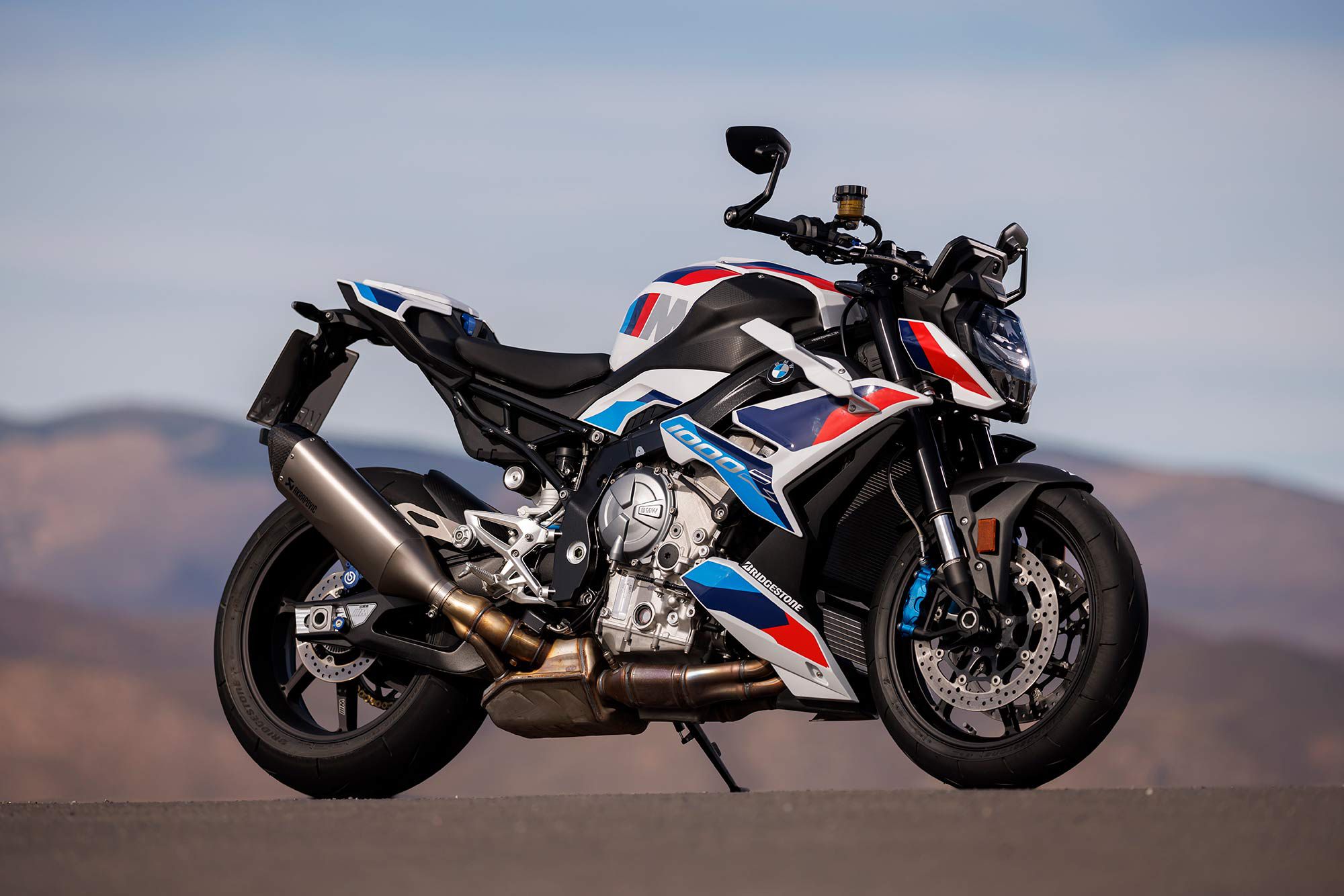
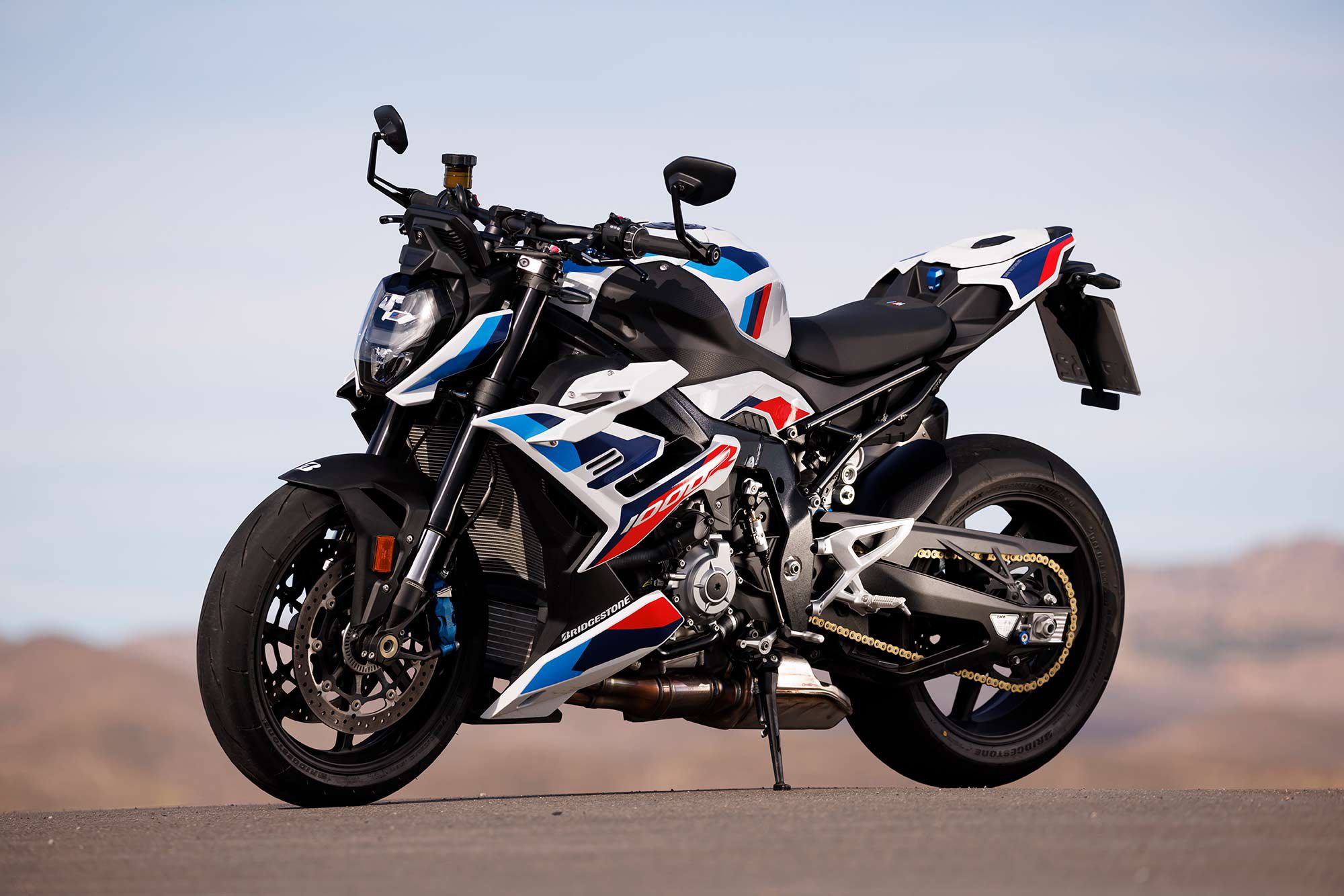
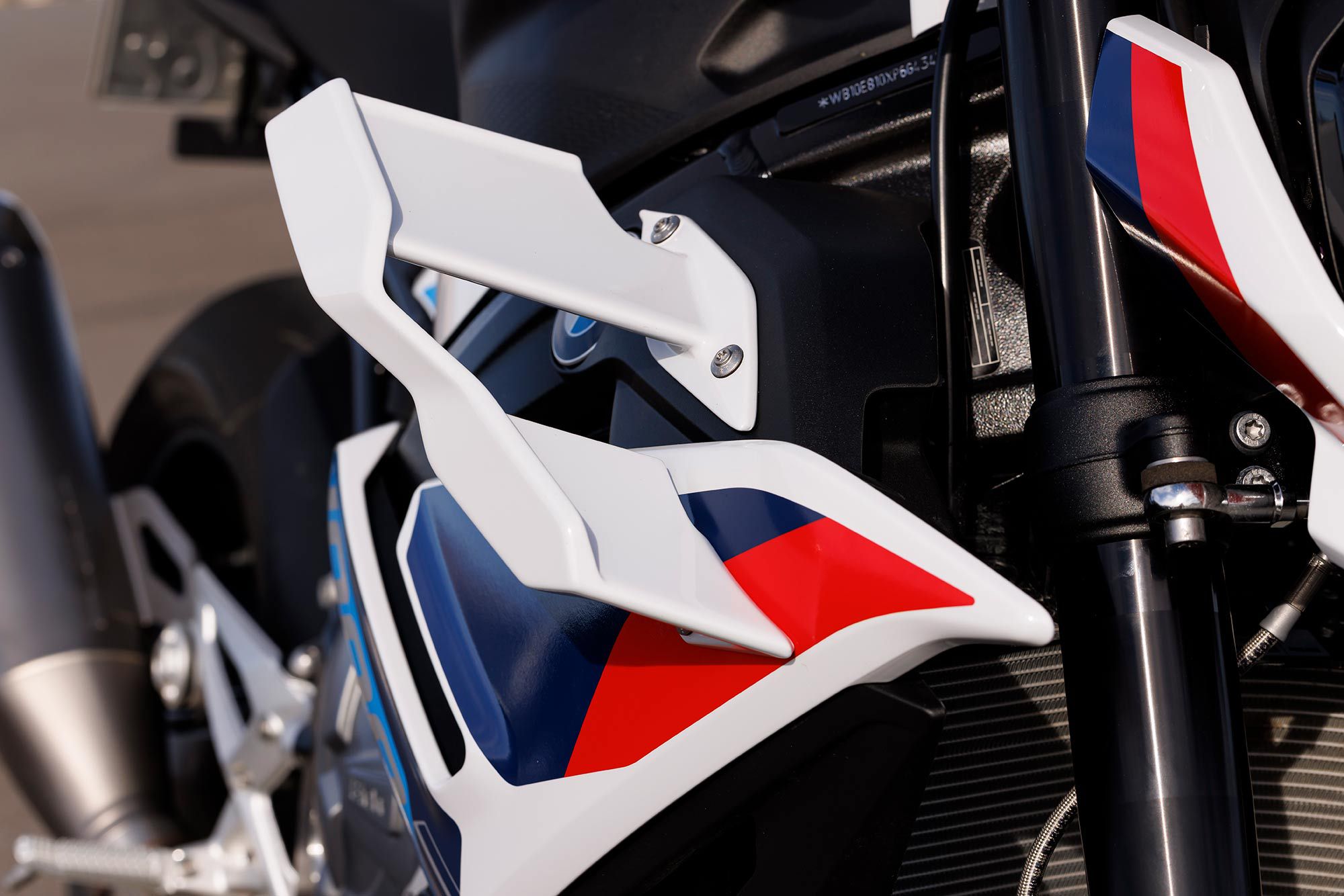
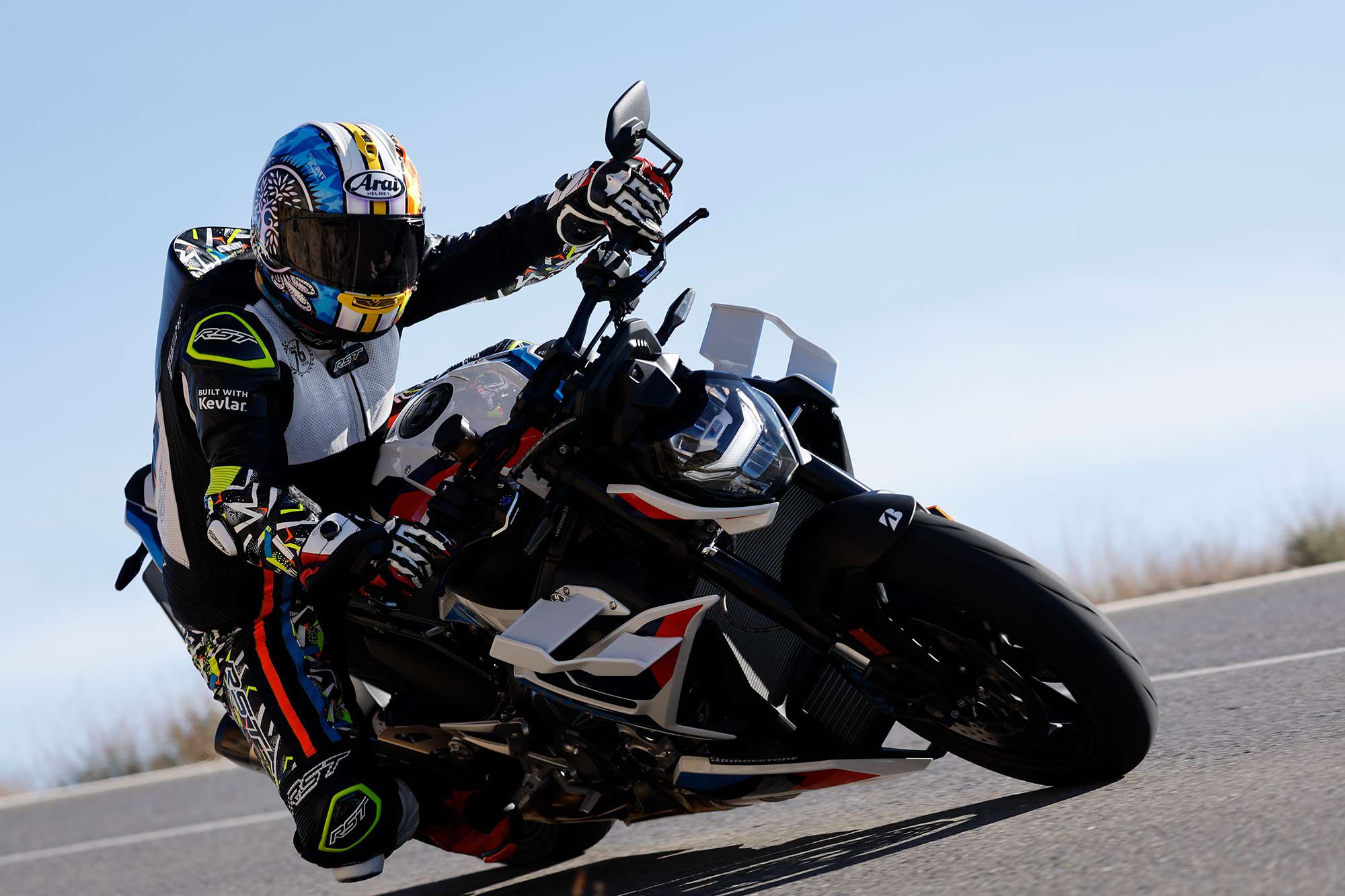
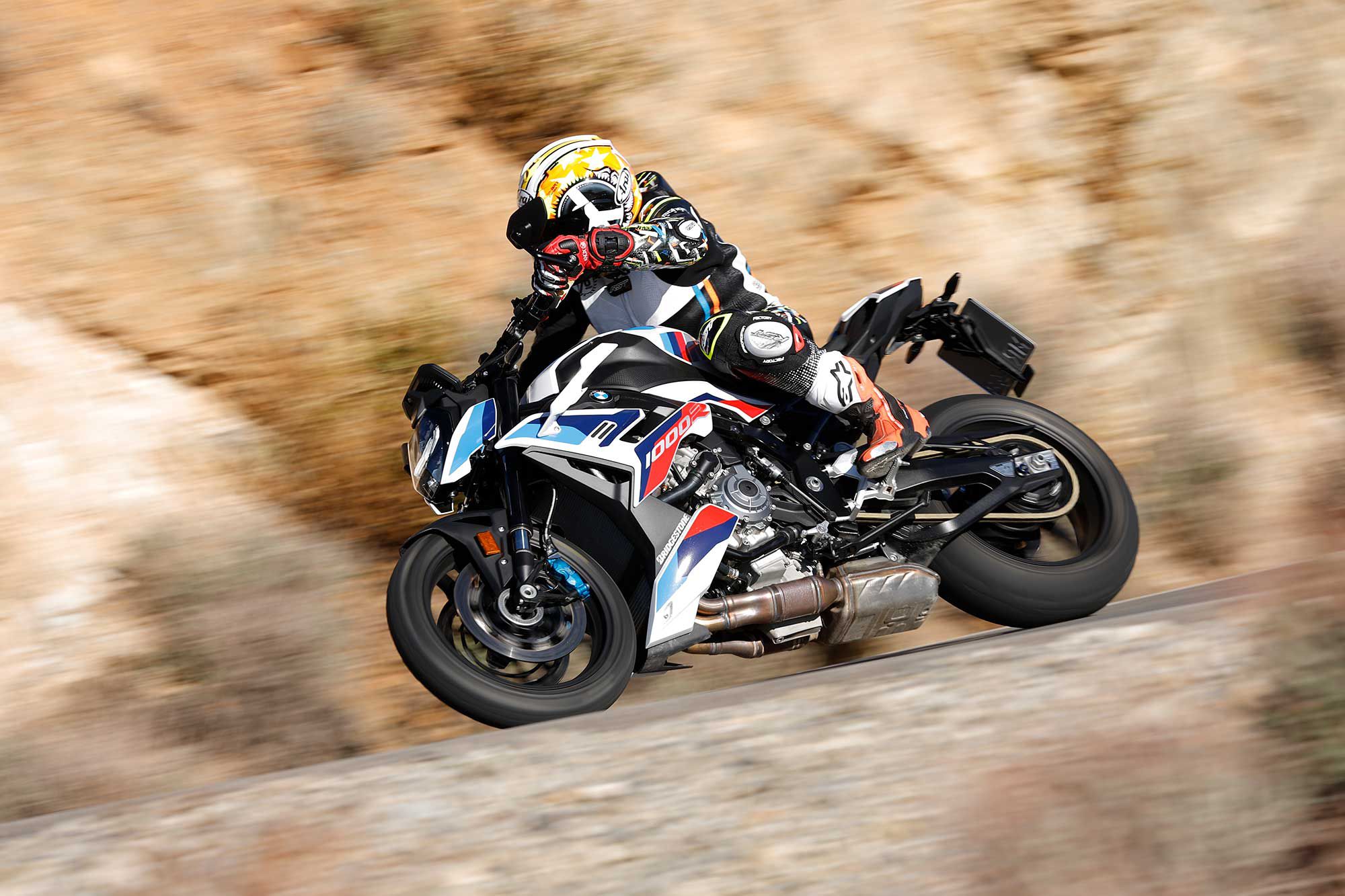
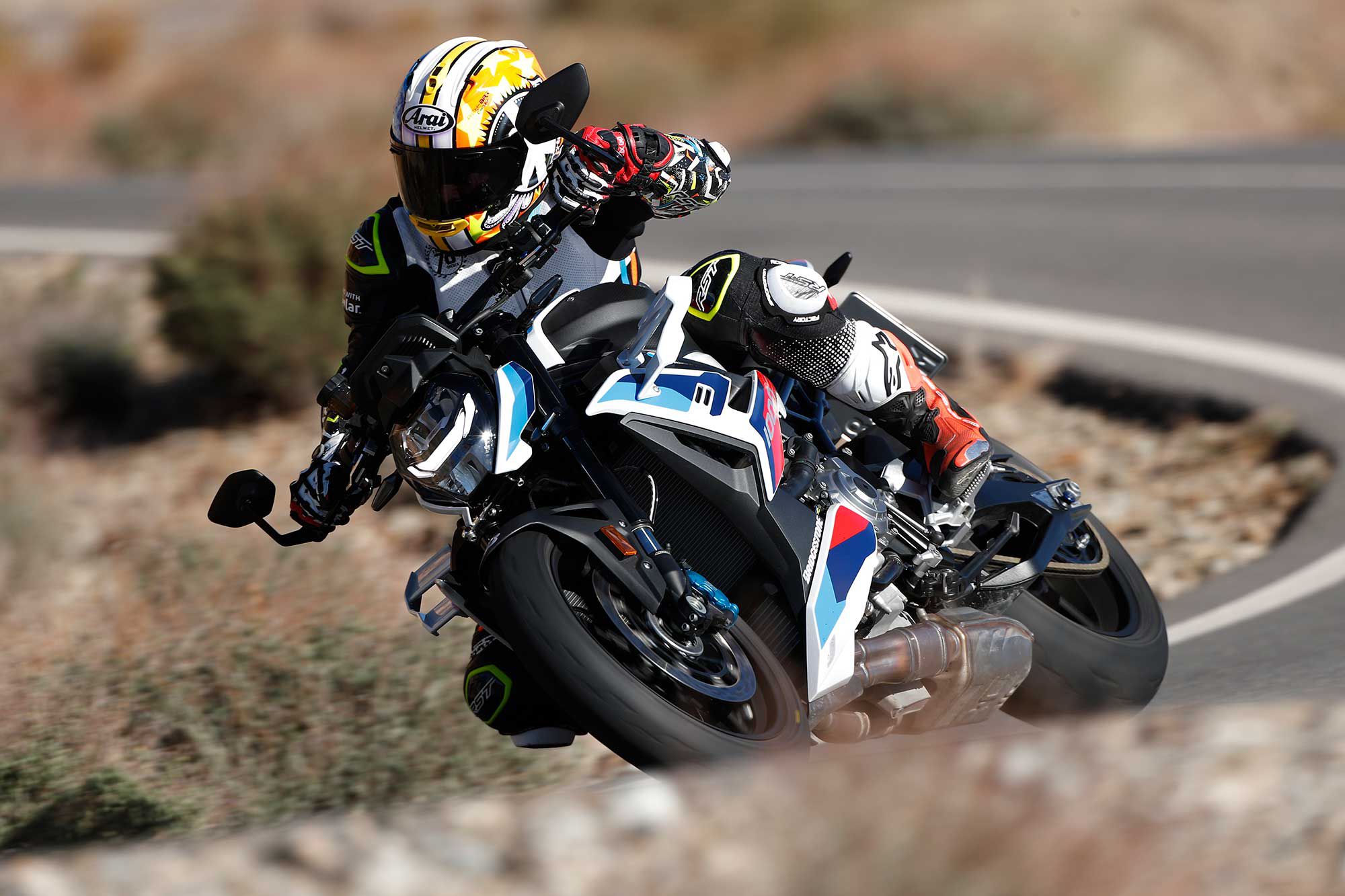
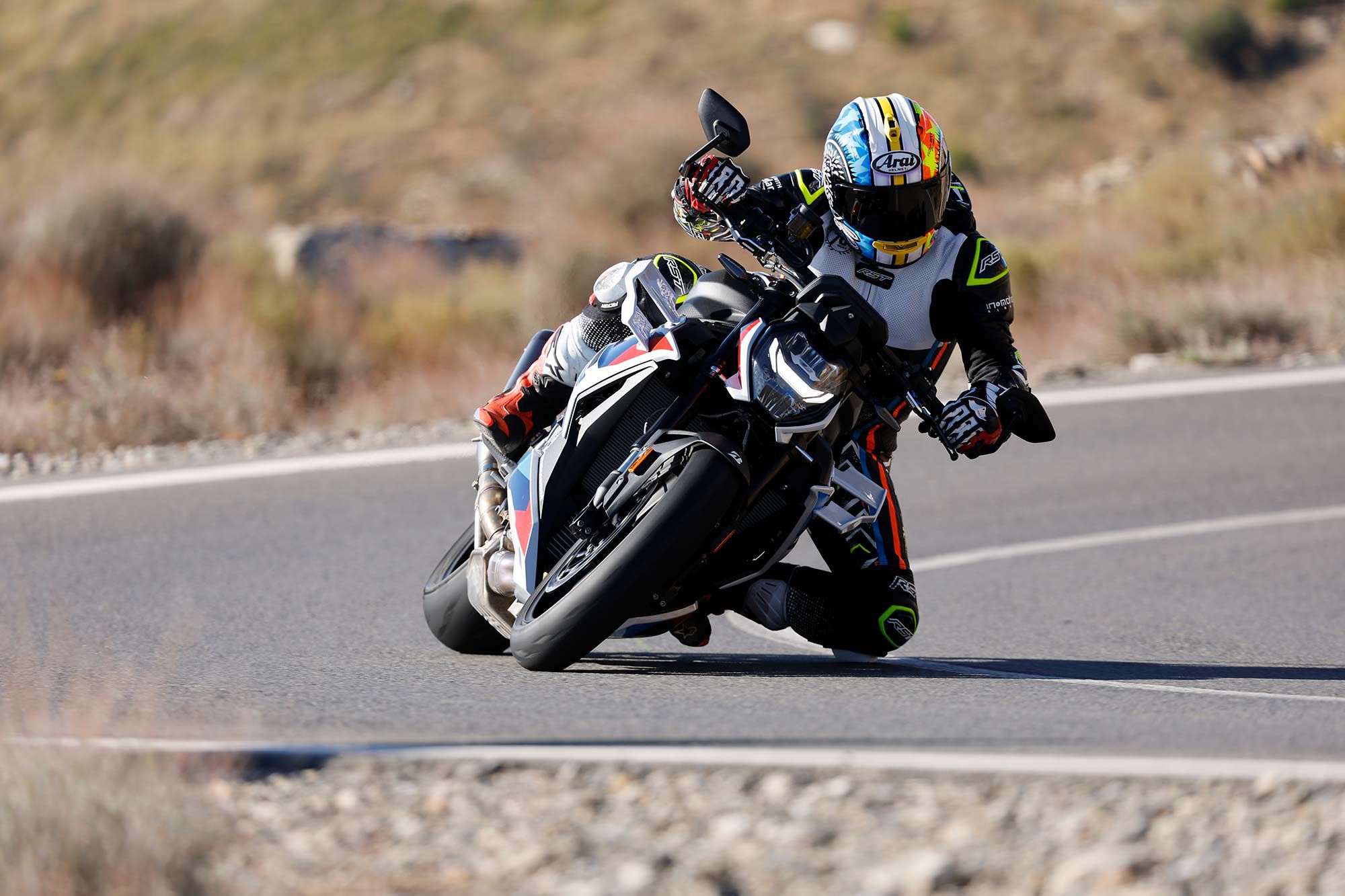
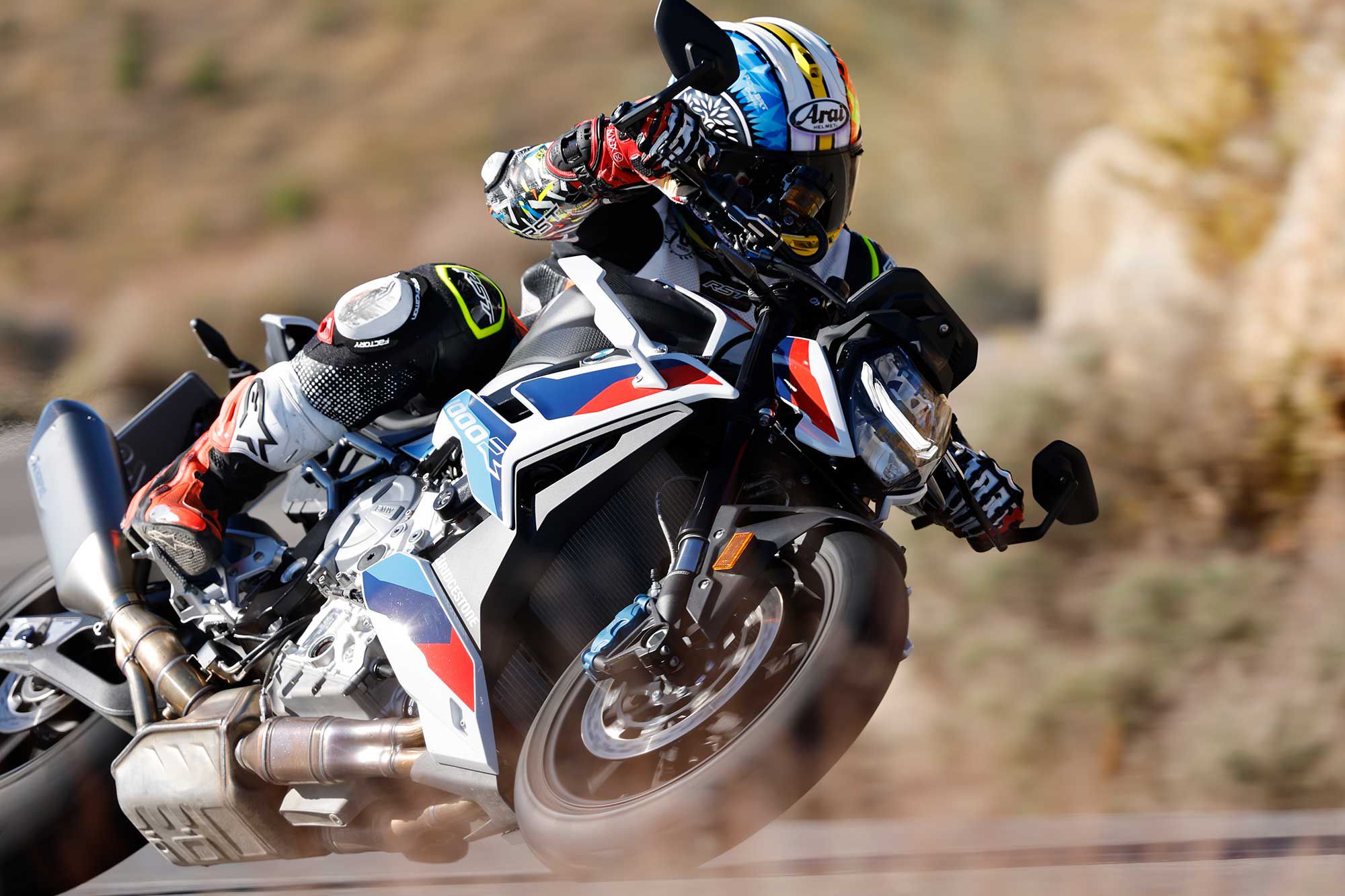
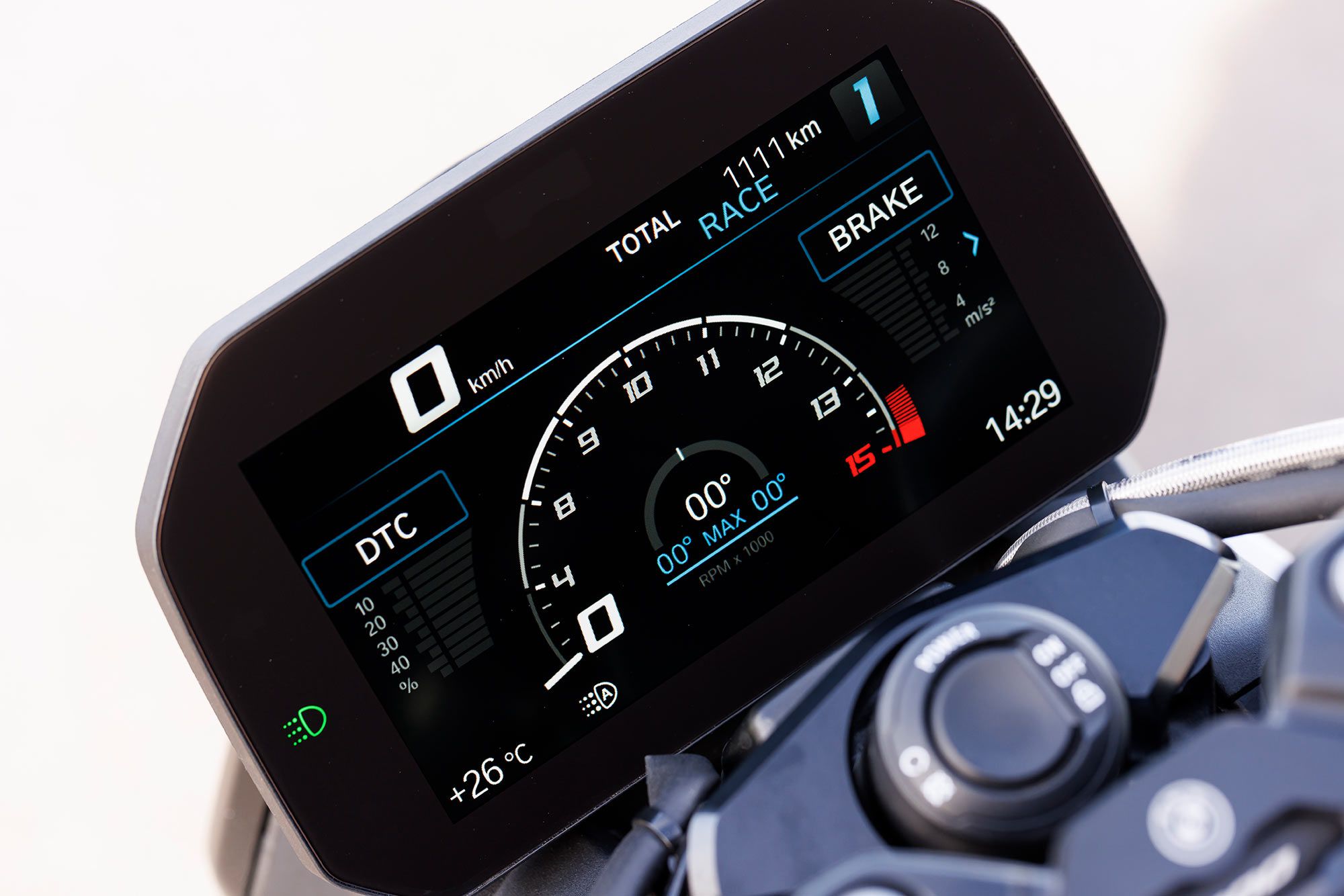
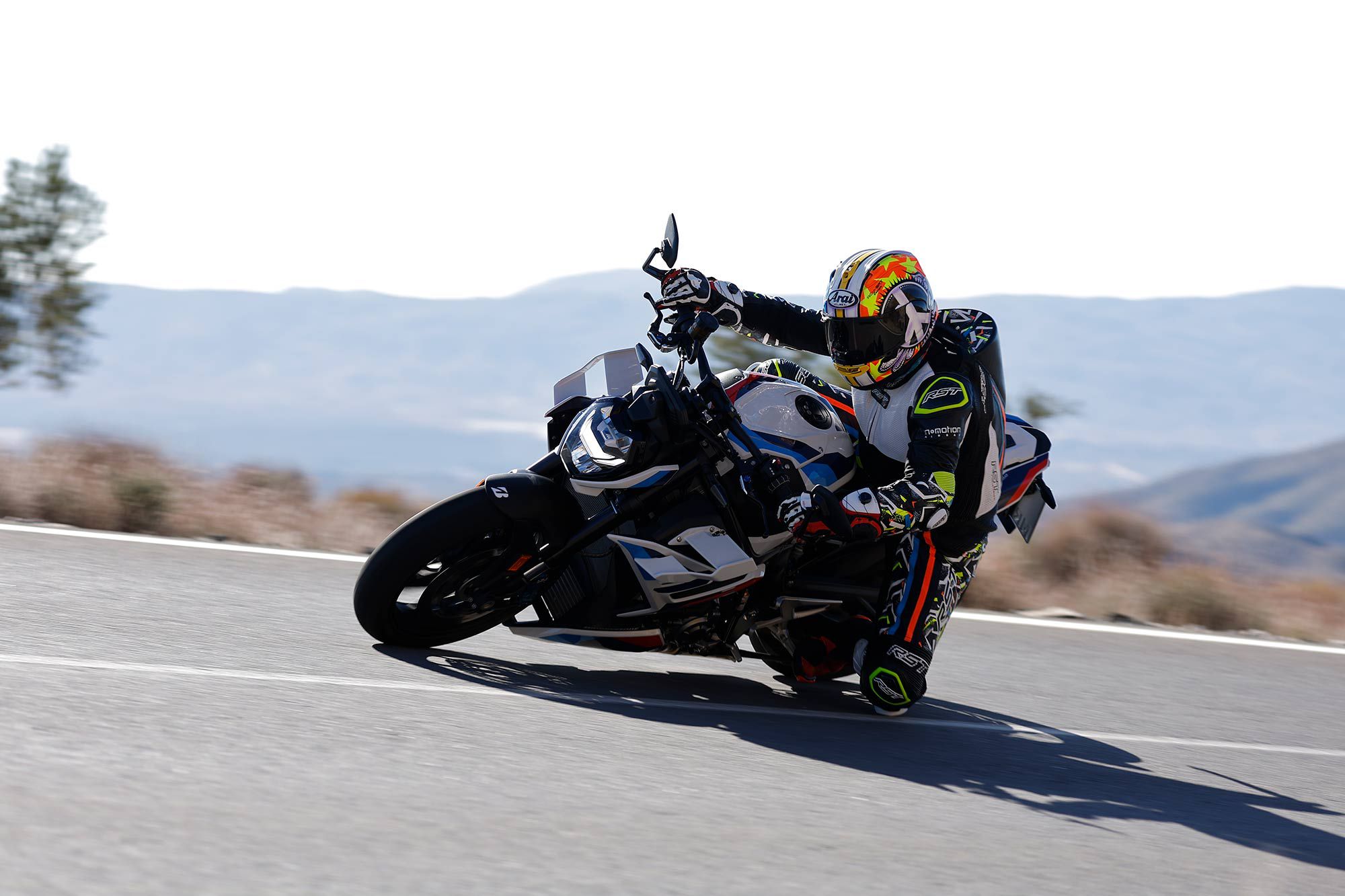
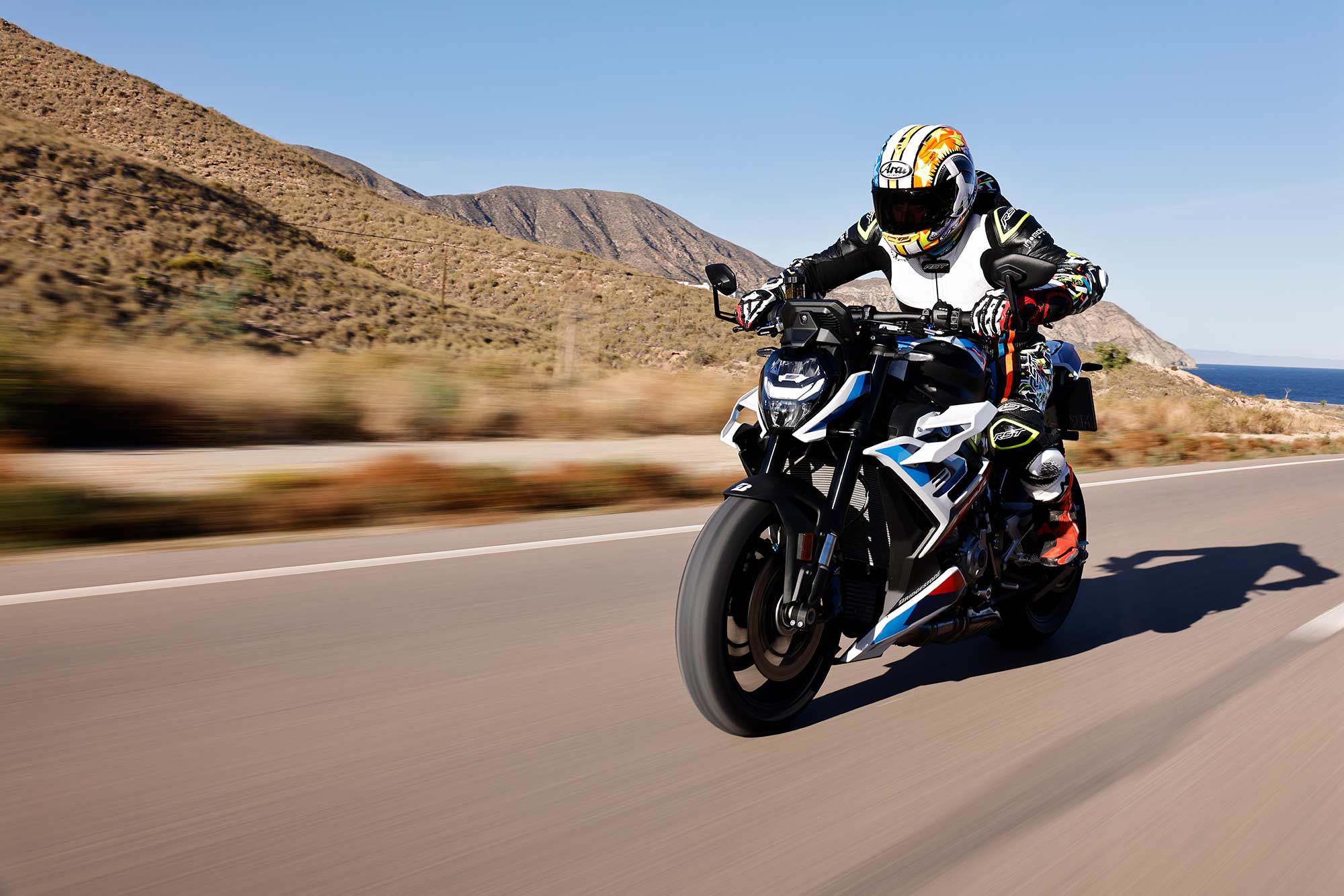
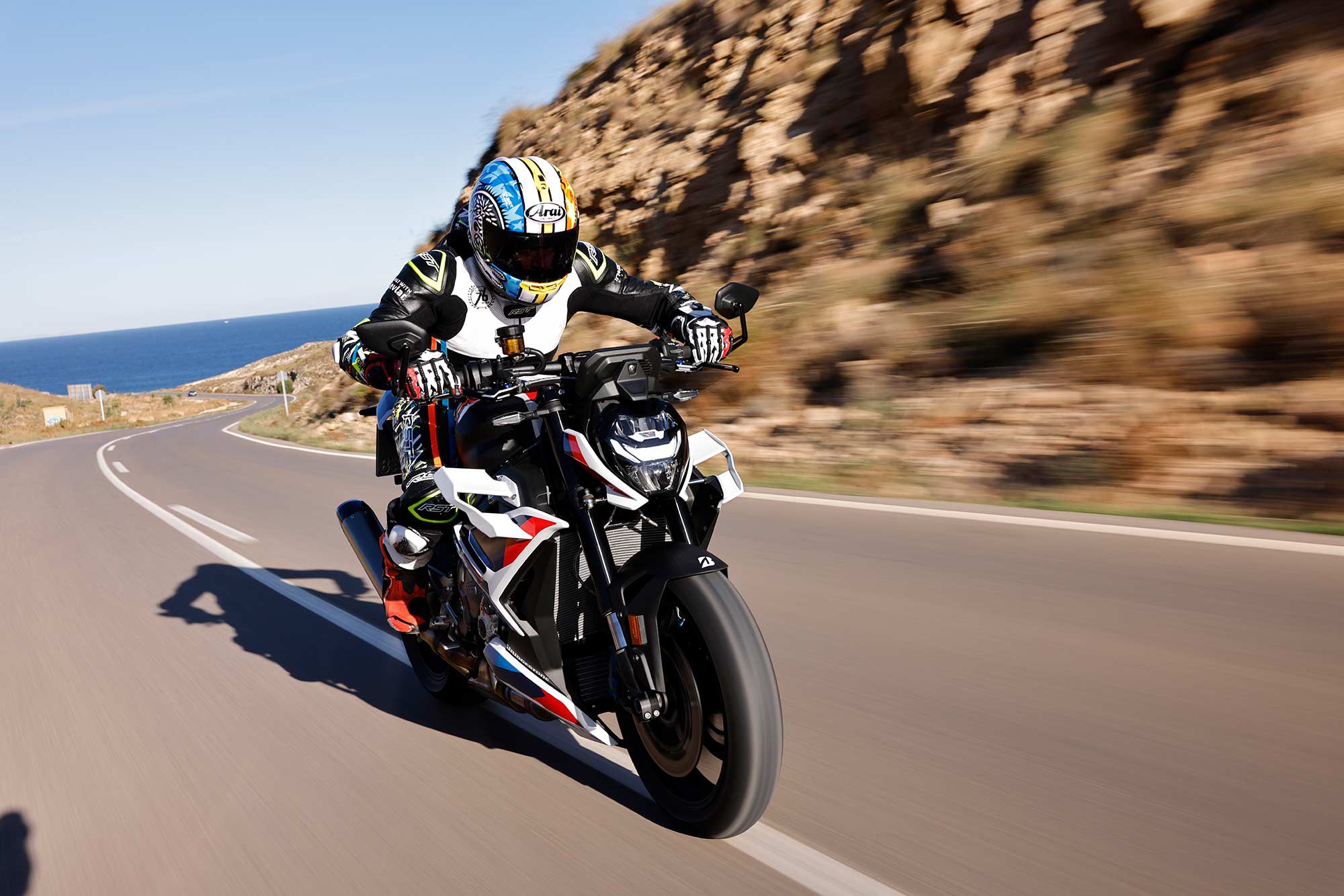
Source: MotorCyclistOnline.com
